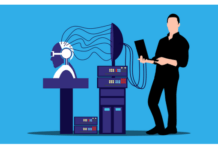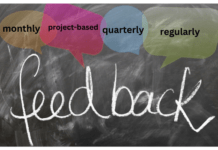TeamLease Services’ latest report, ‘HR Tech: empowering people and enterprises’ analyses the investment made by companies in the adoption of human resource technology tools and the benefits accrued. The Report also reveals the industry trends that show a transformation in the core functions and the subfunctions of HR, due to the adoption of HR technology.
According to the Report, the core HR tech adoption is over 75 per cent in 10 out of the 14 sectors surveyed, and subfunction HR Tech adoption is 75 per cent or more in BFSI, BPO/ITeS, e-commerce and telecommunication sectors. The core functions of HR include administration, payroll and compliance and HR analytics, while the subfunctions consist of talent acquisition, retention and engagement, onboarding, performance management, training and employee productivity [time and attendance]. The benefits of this evolution range from the baseline aspects of process automation for time and cost savings to enabling HR in delivering business value to organisations.
The report reveals that while most large businesses prefer to use their own software, which is built in-house, there is a significant number opting for SaaS (software as a service) platforms and procuring software from multiple vendors. Medium businesses are keen to procure these software from vendors, either in part or in full. 20 per cent of large and medium businesses are open to procuring end-to-end solutions from single vendors. Small businesses, on the other hand, prefer to procure various modules from multiple vendors across all deployment models. 68 per cent of medium businesses prefer to procure end-to-end solutions from single vendors when the deployments are SaaS based. Most large businesses with hybrid licensing choices prefer to deploy HRMS (66 per cent) and Payroll applications (47 per cent) on premise.
The automation of routine processes and efficient data management through this technology has resulted in up to 65 per cent gains in time and cost for the HR administration function. It has also resulted in better control and systematic record keeping with payroll and compliance tech yielding up to 80 per cent in cost savings for the function.
Moreover, the subfunctions of HR have been aided by HR technology. It has significantly improved the process of talent acquisition, retention and engagement by leveraging big data and predictive analytics for matching and identification of the right-fit talent for open positions, thereby saving enormous time and cost, especially, in large-scale hiring. There has been 65 per cent better matching and 80 per cent faster hiring, and up to 65 per cent improvement in talent retention.The technology used for time and attendance tracking and reporting systems have increased the accuracy of payroll by up to 85 per cent and have resulted in a boost of productivity by 25 per cent to 45 per cent.
The structured and automated HR processes improve administrative efficiency by up to 21 per cent, save time and cost up to 30 per cent, and reduce errors and duplication up to 65 per cent.
Payroll processing and compliance tools have reduced compliance risk by half and increased accuracy of payroll processing by up to 55 per cent. They have also helped in the form of 80 per cent savings in data access.
Interestingly, 47 per cent of Indian organisations raised their expenditure on HR Tech by 20 per cent last year, with 56 per cent spending more on talent management and 44 per cent giving priority to expenditure on HR analytics solutions.
Investment in HR analytics (up to 26 per cent) and employee productivity tools (up to 17 per cent) will almost double, talent acquisition/retention (22 per cent) and on-boarding/performance management tools (10 per cent) will witness stable investment trends in the next three years.
For employees, HR tech means being accessible 24×7.
Mobile and social technologies increase productivity by 20 per cent to 25 per cent.
HR Tech is expected to bring about significant improvements in job satisfaction (by 76%), productivity (by 83%) and performance (by 75%). However, for health and safety, and work-life balance, the value equation is predicted to be mixed.
Rituparna Chakraborty, co-founder & EVP, TeamLease services said, “Technology today has not only made life easy, but has also reduced the burden of paper trails for organisations. Big data and technological advancements have enabled organisations to be paperless, presenceless and cashless. Artificial intelligence and machine learning-based tools have enabled faster hiring and improved talent retention to deliver up to 85 per cent time, cost and productivity gains for organisations. The study finds that the implementation of social technologies can potentially raise the productivity of high and skill knowledge workers by 20 per cent to 25 per cent. It has improved the accuracy of evaluations as it has set related benchmarks against which performances can be measured and evaluated. Even at TeamLease, we have embraced digital and today offer significant business value to our clients through technology-driven solutions that improve their productivity and performance.”
Employees have gained from the evolution of HR technology as well. They can now access apps on their mobile phones on the go. The usability and intuitiveness of mobile devices are making them an indispensable consideration in both the design and adoption of HR Tech applications. These apps have incorporated human factors more efficiently than their desktop counterparts. SaaS and PaaS offer greater flexibility and useful functions for every type of mobile application. It has given employees privacy in terms of applying for leave and has also given organisations the power to track its employees in real time. Thereby productivity, quality, innovation and flexibility are areas where more than 70 per cent businesses are witnessing significant quantifiable gains.
Value our content... contribute towards our growth. Even a small contribution a month would be of great help for us.
Since eight years, we have been serving the industry through daily news and stories. Our content is free for all and we plan to keep it that way.
Support HRKatha. Pay Here (All it takes is a minute)




































